We’ve previously looked at how absence changes as pupils get older, particularly the change from Year 7 to Year 8 as well as the transition from Year 6 to Year 7 for disadvantaged pupils.
In this blog, we’re going to look at how absence changes within the academic year and then go on to look at whether patterns of absence across years and terms were different in middle schools compared to secondary schools that admit pupils at age 11.
Data
We will use data for the 2023/24 academic year sourced from 9,000 schools that subscribed to FFT Attendance Tracker.
This provides us with data for all compulsory age (Reception to Year 11) pupils in each school each day.
Absence by half term
Firstly, let’s look at absence by half term and year group in secondary schools.
There are several things to note:
- Absence increases across the year groups
- Within each year group, absence is lowest in the first Autumn half-term and highest in the second summer term
- Absence rates in the second Autumn half-term and the two Spring half-terms was broadly similar for all year groups apart from Year 7
- Absence in the first Autumn half-term was very low (less than 5%) among Year 7 pupils
Doing the same thing for primary schools:
Here we note the patterns are somewhat different
- Absence rates are fairly similar across the year groups apart from Reception
- As at secondary, absence was lowest in the first Autumn half-term
- Rates were highest in the second Autumn half-term, the first Spring half-term and the second Summer half-term
- Absence for Year 6 pupils fell during the first half-term of Summer. Key Stage 2 (SATs) were taken during this period.
Year 6 to Year 7 transition in middle schools
Most pupils change schools between Year 6 and Year 7.
However, some don’t. As well as some all-through schools, there remain around 100 middle schools in the country, of which we have almost half subscribing to Attendance Tracker.
So how does attendance in Year 6 and Year 7 in middle schools compare to secondary schools?
First, we show attendance from Year 5 to Year 8 in state-funded mainstream schools, excluding middle schools. Given the low rate of absence in the first half-term of year 7, we plot Autumn half-terms separately.
Next, we show a similar chart for middle schools.
Absence in middle schools in Years 5 and 6 and the Autumn term of Year 7 tended to be slightly higher than in the secondary schools.
However, absence was lower in middle schools in Year 8.
The caveat here is that we are using a cross-section of data, in other words we are looking at different pupils in each year group.
But within each year group we observe (largely) the same pupils from term to term. And we see that the rate of absence for middle school pupils increased less sharply during Year 7.
The first half term in middle schools
At the beginning of this article we saw that absence in the first half-term was particularly low for pupils in Year 7. This is, of course, those pupils’ first half-term at their new school.
In most of the middle schools in our sample, pupils are admitted at the start of Year 5.
So let’s look at absence by half-term for pupils in middle schools compared to those in primary schools.
In general, the pupils attending the middle schools had a higher rate of absence. We don’t necessarily read too much into this because we’re not comparing like-with-like.
But what we do note is that the absence rate for pupils in middle schools was lower than that of the pupils in the primary school just in the first Autumn half-term.
This may also be evidence of a “new school” effect on absence.
Summing up
In secondary schools, absence is lowest in the first half-term of Autumn and highest in the second half-term of Summer.
Among Year 7 pupils, the rate of absence in the second half-term of Summer was almost twice that of the first Autumn half-term.
Part of the reason for this is that absence in pupils’ first half-term in their new secondary schools was particularly low. We also see signs of low absence in the same term for Year 5 pupils in their first half-term after moving to middle schools. In other words, a short-term “new school” effect on absence.
The rate of absence of Year 7 pupils attending secondary schools that admit at age 11 increased more sharply after the second Autumn half-term than among Year 7 pupils attending middle schools. The initial increase could be due to settling in following initial transition. Whether the subsequent increase is a continuation of the trend or a symptom of some other underlying cause would be worth exploring further.
Want to stay up-to-date with the latest research from FFT Education Datalab? Sign up to Datalab’s mailing list to get notifications about new blogposts, or to receive the team’s half-termly newsletter.



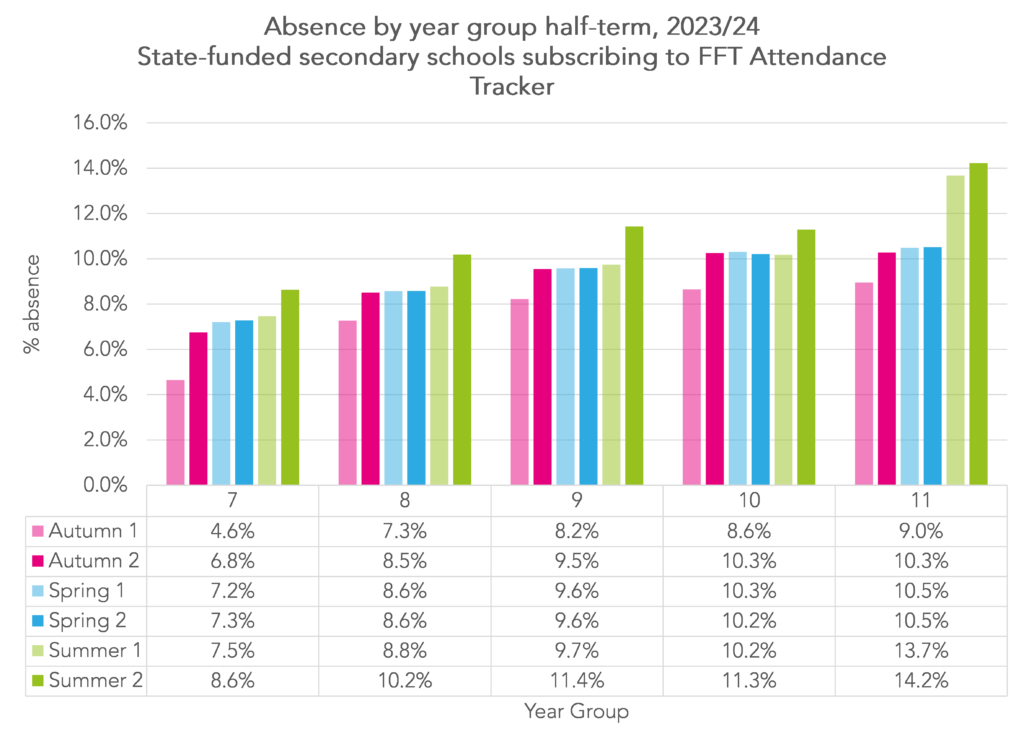
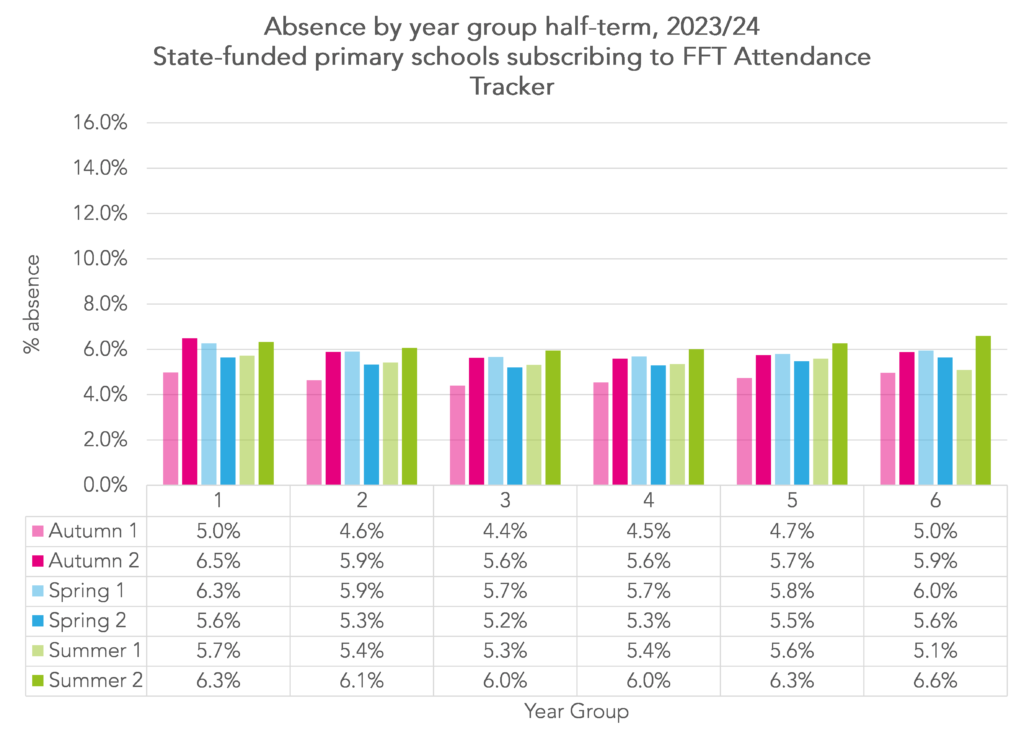
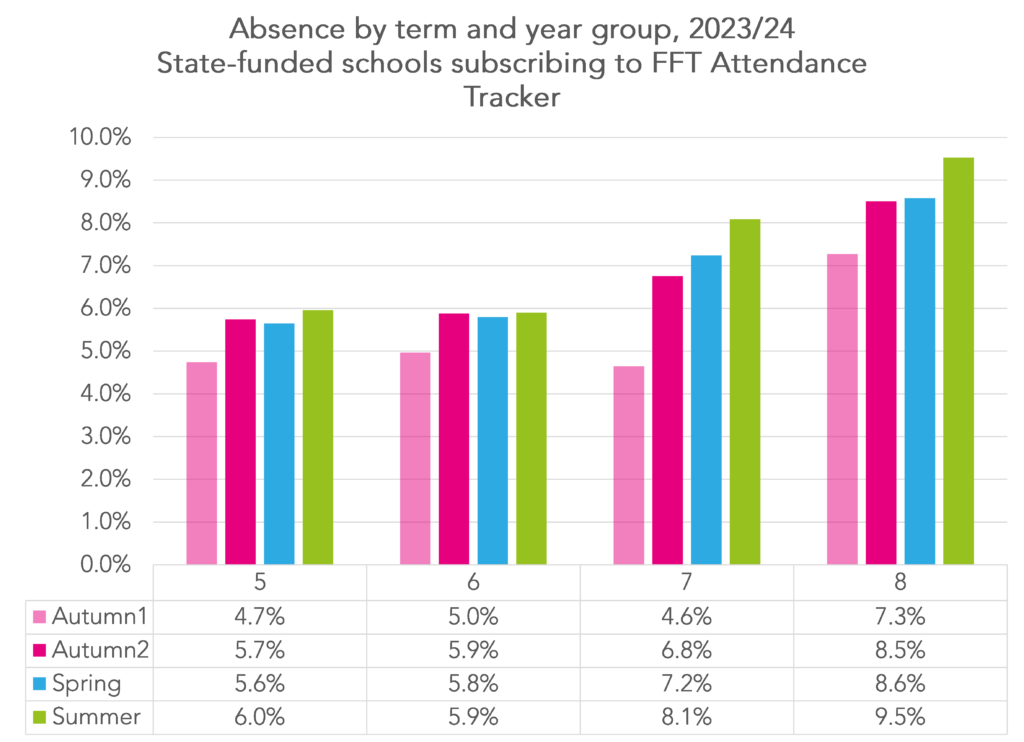
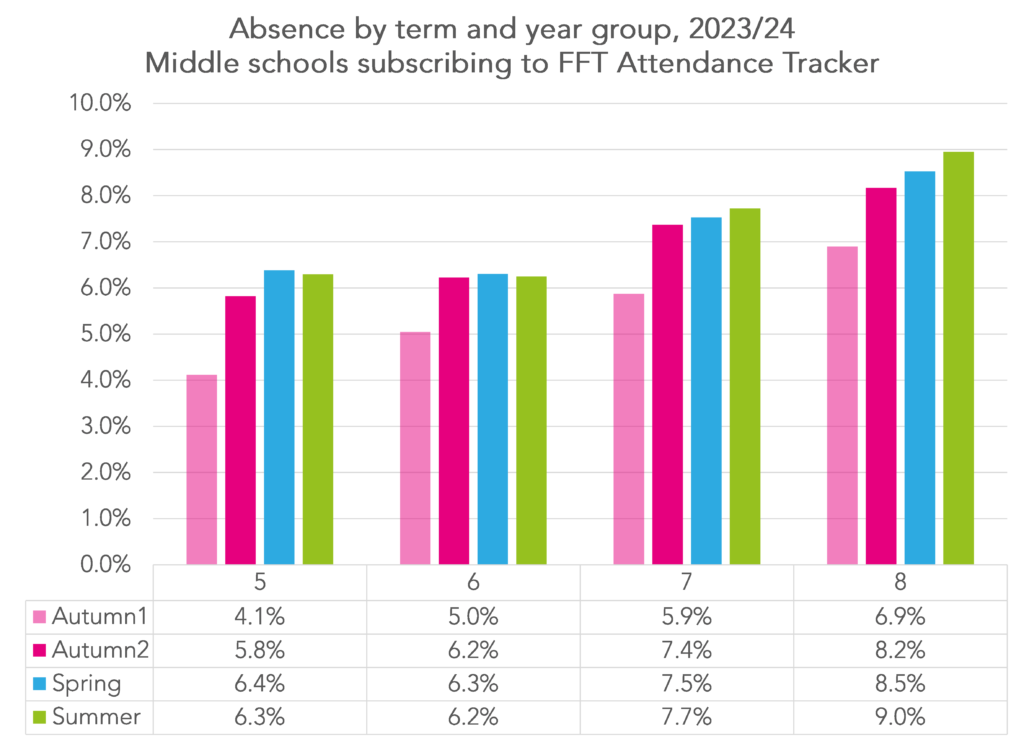
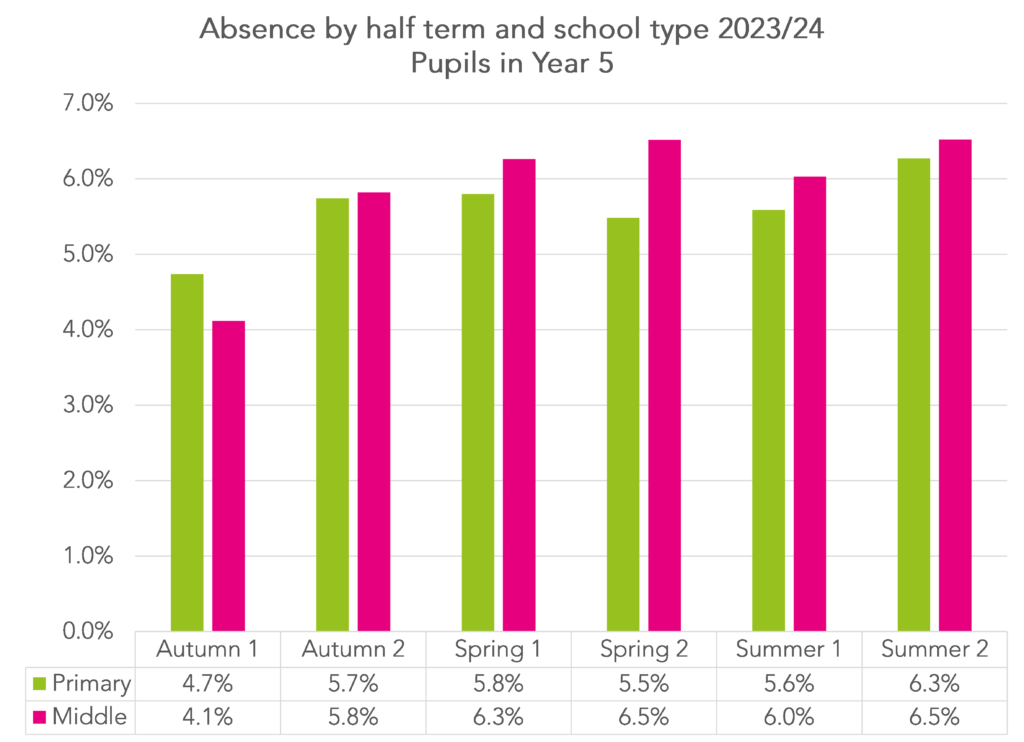
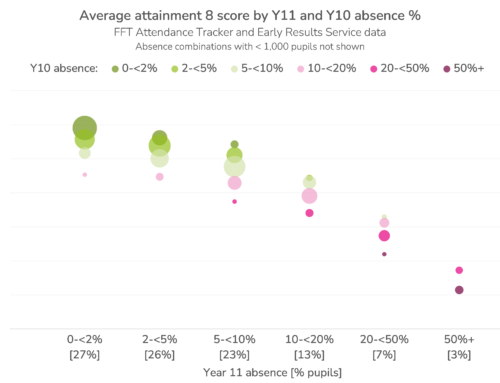
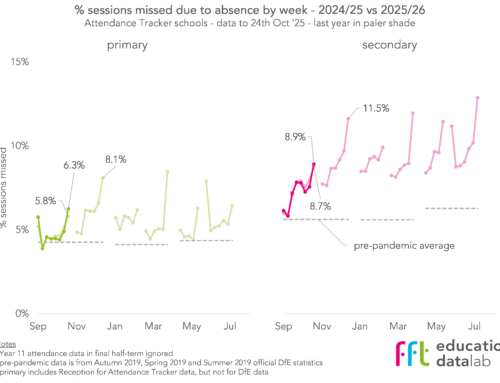
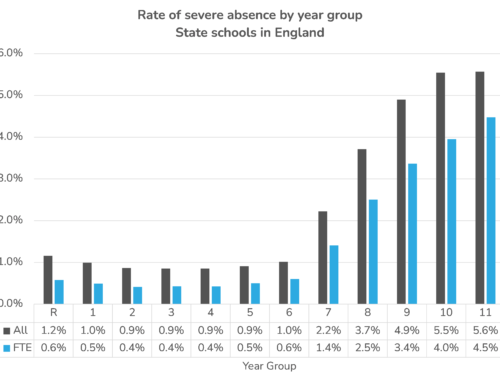
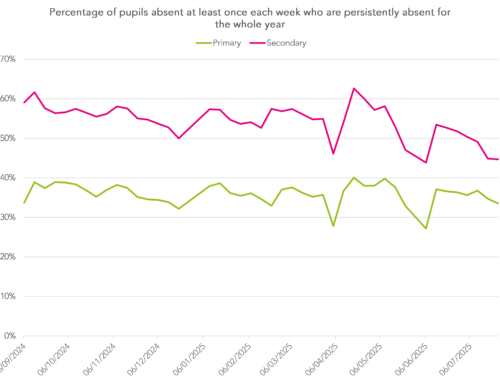
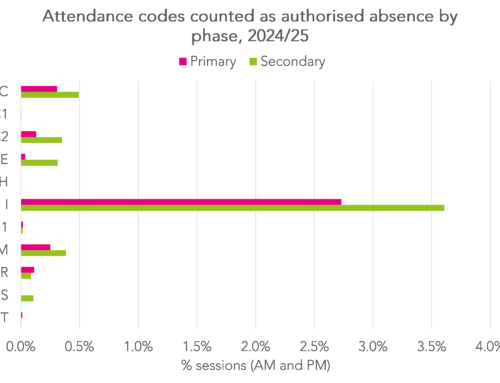
Really interesting to see the comparison between primary, secondary and middle schools – it would be good to see if these finding hold up for children who are disadvantaged?